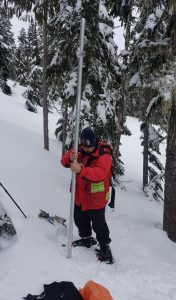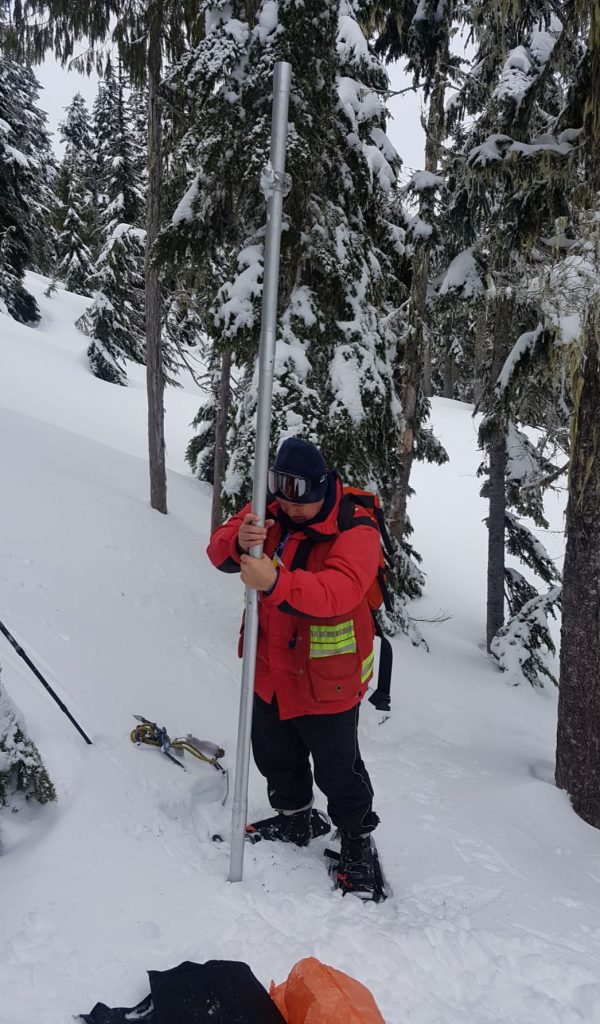VANCOUVER ISLAND – A research project funded by
Geoscience BC has developed new techniques using snow, soil and trees to identify non-outcropping mineral deposits. The agency has also created new techniques for use in the laboratory.
[caption id="attachment_1003719531" align="alignright" width="317"]
 Field work and new laboratory techniques to identify halogen elements may have wide spread application for mineral exploration. (Credit: Geoscience BC)
Field work and new laboratory techniques to identify halogen elements may have wide spread application for mineral exploration. (Credit: Geoscience BC)[/caption]
Called
An assessment of the use of halogens and volatile compounds in vegetation, soil and snow in the exploration for concealed deposits: case histories from Lara and Mount Washington, Vancouver Island, the project centered on two well-studied field sites.
Geoscience BC collected samples at the Mount Washington gold-copper-silver property and from the Lara zinc-copper-lead-silver-gold showing on Vancouver Island. One collection method involved trapping fluids given off by trees – “tree sweat” – in plastic bags. Halogen elements – fluorine, bromine, chlorine and iodine – in soils were sampled by burying ion collectors in the ground for several months. Snow was sampled because it can trap and hold halogen elements.
Project leader Dave Heberlein said: “We have now shown that these techniques are effective on Vancouver Island, but we still have a way to go before they can be widely used by the mineral exploration sector. More work is required to optimize sample types in other common forest types such as the spruce, lodge pole pine or Douglas fir forests of the interior.”
Final reports are now available on the Geoscience BC website (
www.GeoscienceBC.com), which includes the free Earth Science Viewer web mapping application.

 Field work and new laboratory techniques to identify halogen elements may have wide spread application for mineral exploration. (Credit: Geoscience BC)[/caption]
Called An assessment of the use of halogens and volatile compounds in vegetation, soil and snow in the exploration for concealed deposits: case histories from Lara and Mount Washington, Vancouver Island, the project centered on two well-studied field sites.
Geoscience BC collected samples at the Mount Washington gold-copper-silver property and from the Lara zinc-copper-lead-silver-gold showing on Vancouver Island. One collection method involved trapping fluids given off by trees – “tree sweat” – in plastic bags. Halogen elements – fluorine, bromine, chlorine and iodine – in soils were sampled by burying ion collectors in the ground for several months. Snow was sampled because it can trap and hold halogen elements.
Project leader Dave Heberlein said: “We have now shown that these techniques are effective on Vancouver Island, but we still have a way to go before they can be widely used by the mineral exploration sector. More work is required to optimize sample types in other common forest types such as the spruce, lodge pole pine or Douglas fir forests of the interior.”
Final reports are now available on the Geoscience BC website (
Field work and new laboratory techniques to identify halogen elements may have wide spread application for mineral exploration. (Credit: Geoscience BC)[/caption]
Called An assessment of the use of halogens and volatile compounds in vegetation, soil and snow in the exploration for concealed deposits: case histories from Lara and Mount Washington, Vancouver Island, the project centered on two well-studied field sites.
Geoscience BC collected samples at the Mount Washington gold-copper-silver property and from the Lara zinc-copper-lead-silver-gold showing on Vancouver Island. One collection method involved trapping fluids given off by trees – “tree sweat” – in plastic bags. Halogen elements – fluorine, bromine, chlorine and iodine – in soils were sampled by burying ion collectors in the ground for several months. Snow was sampled because it can trap and hold halogen elements.
Project leader Dave Heberlein said: “We have now shown that these techniques are effective on Vancouver Island, but we still have a way to go before they can be widely used by the mineral exploration sector. More work is required to optimize sample types in other common forest types such as the spruce, lodge pole pine or Douglas fir forests of the interior.”
Final reports are now available on the Geoscience BC website (
Comments